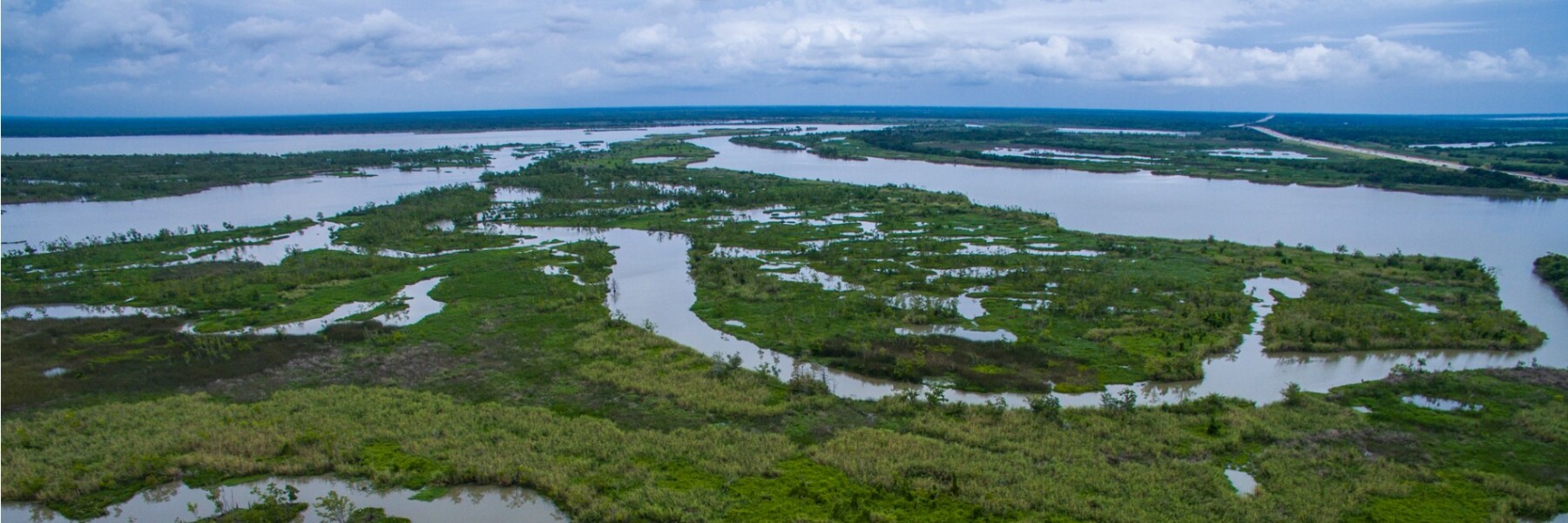Imagine it is Super Bowl Sunday. You are settling in for the second half of a close game between the Patriots and the Falcons, snacks and beverages within comfortable reach.
As you are watching, however, the playing field starts to vanish before your eyes.
First, the end zone disappears. You blink in disbelief. Then the 50-yard line is gone. You do another double take. Finally, the opposing goal line and field goal posts slip away into darkness. All within a matter of minutes.
Outlandish as the scenario seems, this is what is happening right now along the Gulf Coast of Louisiana. Every hour, the state loses about a football field of land as coastal marshes and swamps sink into the water. Every year, the ocean consumes an area the size of Manhattan.
The loss of wetlands in the Mississippi River Delta has been the great disappearing act of the past century. Since the 1930s, Louisiana has lost close to 1,900 square miles of wetlands, about the size of Delaware.
There are many reasons for this crisis. Storms like Hurricanes Katrina and Rita do incredible damage to barriers islands and the wetlands they protect. Rising sea levels in the Gulf continue to consume land at the water’s edge.
But we are also losing wetlands at an alarming rate because the Mississippi River has been cut off from its Delta for decades by levees designed to prevent flooding. It is an aquatic superhighway without exit ramps to allow the river to deposit land-building sediment in the Delta.
The state of Louisiana, rightly, recognizes the loss of its coastline as an existential threat to its communities and economy. Its 50-year, $50-billion Coastal Master Plan would reconnect the Mississippi to its Delta through large-scale sediment diversion projects that would restore marshlands. Some of these projects were authorized years ago.
Now one of them – called the Mid-Barataria Sediment Diversion – may be moving closer to federal approval thanks to a strong push by Louisiana Gov. John Bel Edwards.
At Edwards’ urging, the federal government recently agreed to fast track the permitting process for the Mid-Barataria diversion, potentially speeding up its approval and construction by years.
The proposed diversion is proposed on the west bank of the Mississippi River levee below New Orleans near Myrtle Grove, Louisiana, an area that has suffered significant wetlands loss. It would build wetlands in Barataria Bay by sending up to 75,000 cubic feet per second of water and sediment at controlled times.
Why is this project so important?
Every year that wetlands loss continues unchecked, the Gulf coast and cities like New Orleans become more vulnerable to major storms that face fewer natural obstacles on their destructive path. A recent analysis for the state, prepared by the Rand Corporation and Louisiana State University, pegged the potential increased cost of storm damage from land loss at up to $133 billion.
There’s more at stake. Wetlands loss puts at risk a third of the nation’s domestic oil production, 10 of its largest shipping ports, and 40% of all the seafood harvested in the lower 48 states. It threatens species important for hunting and fishing.
The Rand/LSU analysis estimated that continued land loss threatens up to $7.4 billion a year in direct costs to the economy and billions more in potential indirect costs.
The Mid-Barataria project, on its own, will not stop all of the wetlands loss or eliminate all of the economic threats. But it is an important start.
This is an infrastructure project vital to our economy, our coastal communities and our environment, and it ought to be a national priority.
When you are losing a football field of land an hour, you don’t have time to waste.



